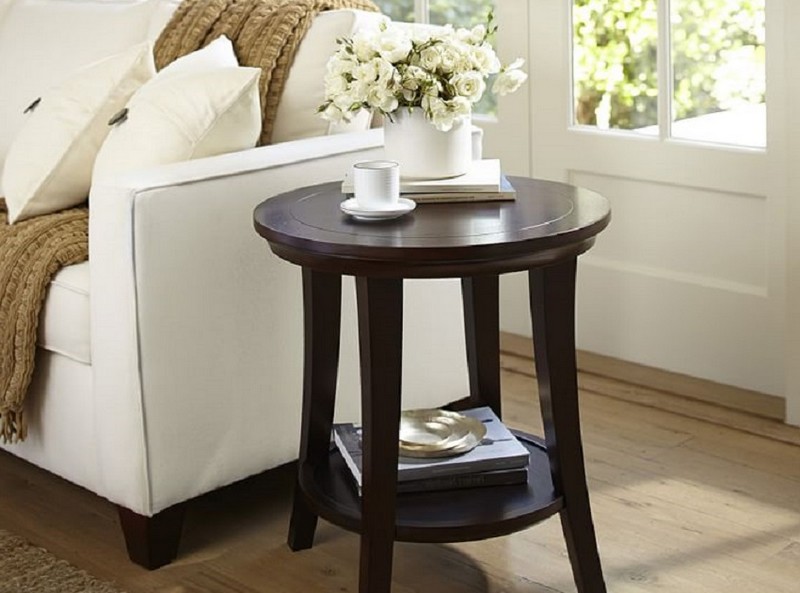Living room end tables can add a point of interest and finishing touch to your home interior. Instead of introducing a coffee table only, adding some accent tables in your living room will give you more chance to personalize your space and add more functions too.
End tables are one of the best choices when you want to provide more functions in your living room. Not only delivers style to your room appearance, it can also be a nice place to rest your coffee cup or teacup when you won’t e bothered by reaching that extra meter.
If you think that an end table is suitable for your living room, this following information will guide you to your ideal piece. Here, you can find some unique living room end tables and a few things to consider when shopping for one. So, let’s check this out!
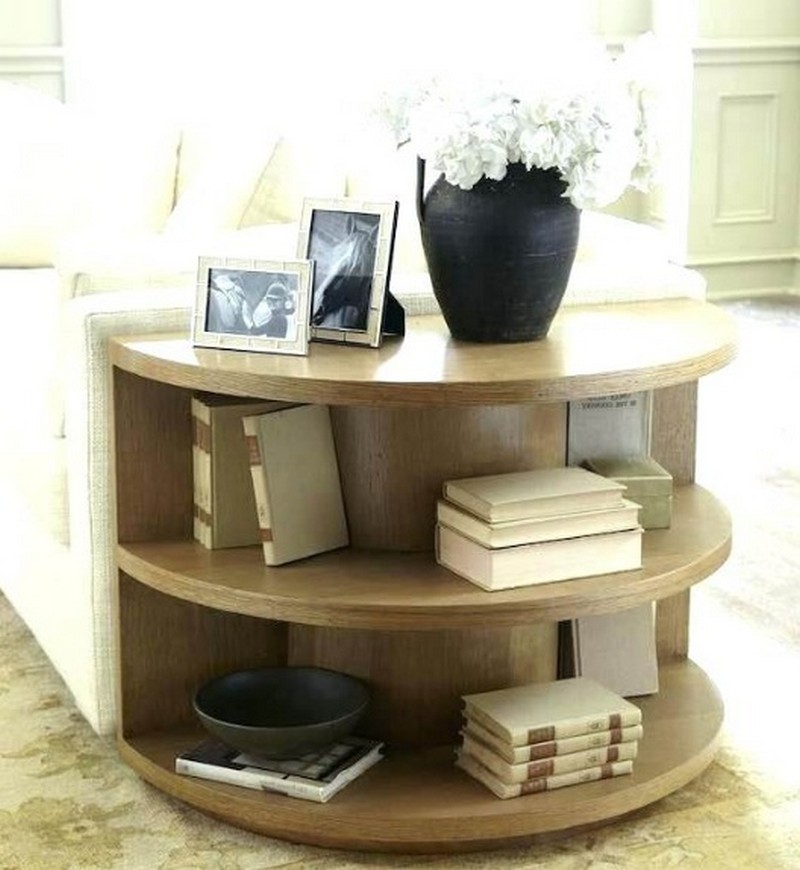
Unique End Tables for Your Perfect Living Room
When it comes to a unique end table, the one with a solid trunk leg and white round wooden top will surely strike a pose in your living room. This kind of end table is perfect for any home style from a modern to a more rustic interior.
Moreover, there is also an end table designed with a wooden rock under a round glass top. This kind of end table is perfect for those looking to blend the natural and the man-made piece. You can place your small succulents or teacups to style these living room end tables.
If you dare to be different at choosing an end table, a patterned cube made entirely from coconut shells will be a great choice. This end table will suit your modern living room very well. Rather than a cube end table, there is also a rectangular wooden trunk end table as an alternative.
In addition, there is also a unique aquarium end table that will incredibly transform the style of your living room. This kind of end table usually features a glass top that allows you to place your things comfortably. Its clear design allows you to have a clutter-free visual.
Things to Consider When Shopping for End Tables
Then, what should we consider when buying an end table? Figuring out the right shape to suit your living room style is one of the most important points in choosing living room end tables. At this point, you should determine first where you want to put the end table.
After that, you can think of the right materials to choose from. End tables also come in a different variety of materials from wood to glass materials. You need to take the existing furniture into account when selecting a material. Lastly, you should consider the style and size as well.
In conclusion, an end table can be an interesting finishing touch in any living room. When it’s chosen wisely, there’s no doubt that it can make your living room looks even more beautiful. So, you can now use these tips to choose living room end tables to boost your home interior style.

Side tables
Side tables are a great solution for adding extra storage space and functionality to your home. They come in various styles, materials, and sizes, providing a practical addition to your existing furniture collection.
Side tables can be utilized in almost any room in your house. In the living room, they can function as a surface for remote controls, magazines, or a cup of coffee next to the sofa. In the kitchen, a side table can be used as an additional workspace or as a place to store spices and cooking utensils. In the bedroom, they can serve as a bedside table or as a spot for a reading lamp and books. In the bathroom, a side table can also be used to store towels and toiletries.
When it comes to materials, there are numerous options for side tables. Depending on your preferred style and intended use, you can choose between wood, metal, glass, or plastic. Wooden side tables add a warm and natural feel to the room, while metal or glass side tables can introduce a modern and elegant touch. Plastic side tables are a more budget-friendly option and are suitable for outdoor use or in humid environments.
The size of the side table should be selected based on the available space and its intended use. If space is limited, you can opt for a small side table that only has room for a cup or a book. However, if you have a larger area, you can choose a larger side table that offers more storage space.
Side tables are not just functional; they can also contribute to the style of your interior. They can reflect your personal style and add character to your space. Select a side table that complements the rest of your decor, whether it’s modern, rustic, vintage, or minimalist. You can also combine different side tables to create an interesting look.
Overall, side tables are a practical way to add extra storage space and functionality to your home. Regardless of your style, space, or budget, there’s certainly a side table that suits your needs. Explore the wide selection and find the perfect side table for your home.
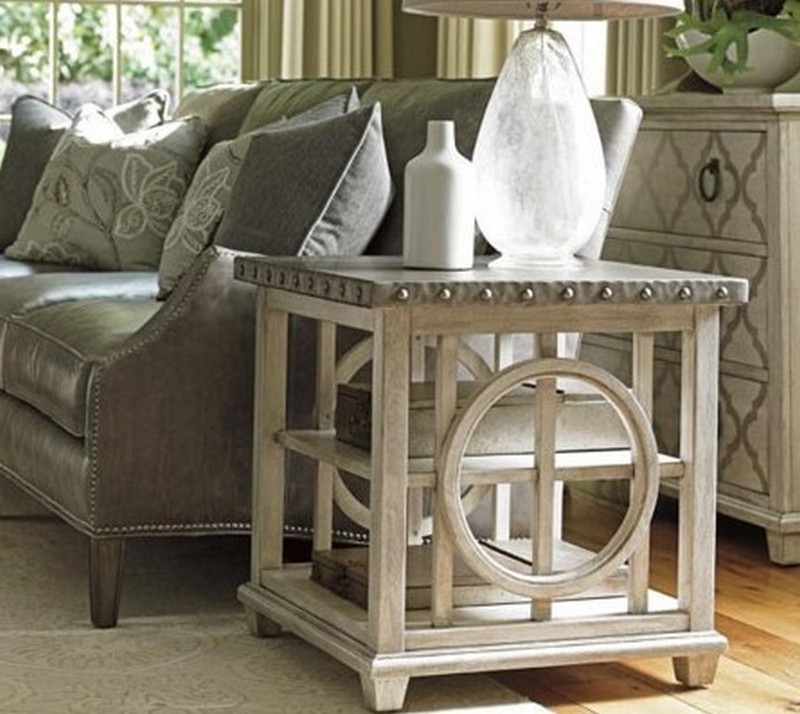
Characteristics of side tables
Side tables are versatile and practical pieces of furniture used in various living spaces. They are defined by their small size and are frequently used to complement other furniture such as sofas, armchairs, or beds. Their purpose is to offer additional storage space or convenient storage options near the main piece of furniture.
Side tables come in a range of shapes, sizes, and materials. They can be crafted from wood, metal, glass, or even plastic. Their designs range from contemporary and minimalist to antique and rustic. This variety allows you to select a side table that suits your personal furnishing style and seamlessly integrates into the existing room concept.
The functions of side tables are incredibly diverse, mirroring their designs. They often serve as a place to keep drinks, magazines, books, or remote controls. This means they can be used as a practical accessory in the living room, family room, bedroom, or even the hallway. Side tables can also serve as a decorative element and be adorned with beautiful vases, candles, or other decorative objects.
Due to their compact size, side tables can be easily rearranged or moved to suit individual needs or the room’s layout. Many of these models are equipped with wheels or legs to make them easier to move, but there are also models that stand firmly and stably in place.
If they have the appropriate height and stability, side tables can also function as additional seating, which is particularly useful when extra seating is needed for guests.
Functions and uses of side tables
The functions of side tables are diverse. They can be used as bedside tables to store books, alarm clocks, lamps, and other essentials. In the living room, they can serve as storage space for remote controls, magazines, or drinks. In the office, they provide space for office supplies such as pens, notebooks, and file folders. Even in the hallway, side tables can be used as key holders or to store bags and other small items.
Side tables are available in various sizes, shapes, and materials. They can be chosen as standalone furniture or as an addition to other furniture such as a sofa or bed. Some side tables come with extra features such as drawers or shelves to expand storage options. Others can be folded or stacked, making them highly practical if they are only needed occasionally or need to be stowed away to save space.
The way in which side tables are used depends on an individual’s needs and preferences. They can function as practical storage for easily accessible items or as a decorative element that enhances the aesthetics of a room. Due to their versatility and flexibility, side tables are an ideal solution for adding extra storage and functionality to any living space.
When selecting a side table, there are several factors to take into account. The room’s size and the existing furniture influence the appropriate size and shape of the table. The chosen material should fulfill both aesthetic and practical purposes. For instance, a wooden side table exudes a warm and cozy charm, while a metal table can create a modern and industrial aesthetic.
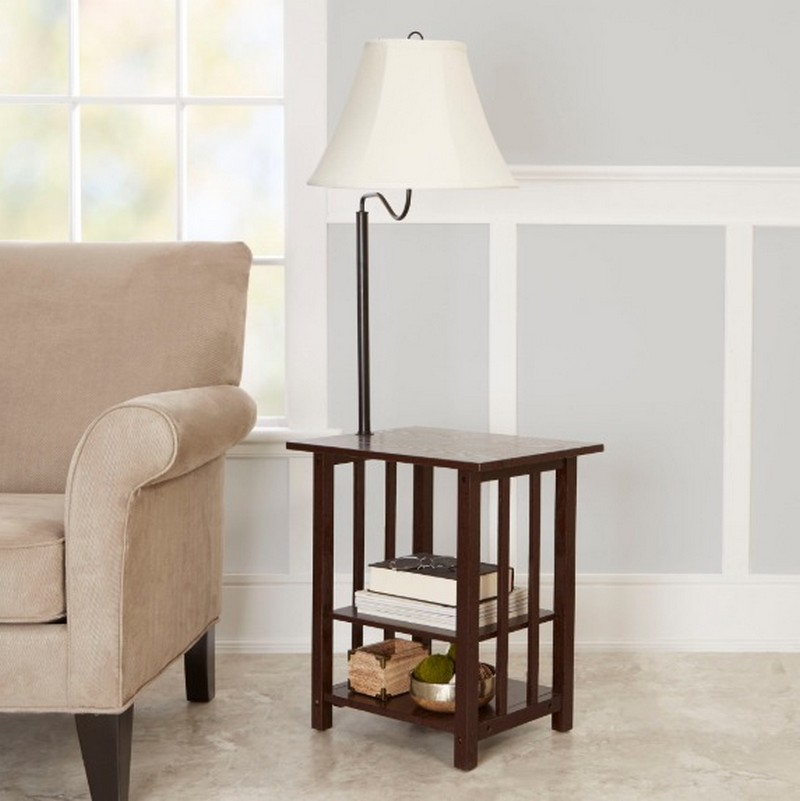
Varieties of side tables
Side tables are adaptable furniture pieces that can be utilized in almost any room. Not only do they serve as practical storage, but they also contribute a stylish accent to the interior. This guide introduces different types of side tables to assist you in choosing the right one for your home.
- Classic Side Table:
The classic side table is a timeless piece of furniture offered in various styles. It is often crafted from wood and typically comes in rectangular or round shapes. These tables complement traditional interior design styles and provide sturdy storage for books, magazines, or decorative items.
- Modern Side Tables:
Modern side tables are characterized by their minimalist designs and clean lines. Often made from glass, metal, or plastic, they frequently feature geometric shapes. These tables fit seamlessly into modern or contemporary interior styles and add an element of elegance to the room.
- Industrial Side Tables:
Industrial side tables are known for their rustic charm and solid construction. Often crafted from recycled materials like wood and metal, they have a rough surface. These tables are well-suited to industrial or loft-style interiors and impart a vintage feel to the room.
- Scandinavian Side Tables:
Scandinavian side tables are marked by their simple and functional designs. Often made from light wood, they possess clean lines and minimalist shapes. These tables blend effortlessly with Scandinavian or Nordic interior styles and create a spacious and comfortable ambiance in a room.
- Vintage Side Tables:
Vintage side tables are perfect for those seeking to infuse a hint of nostalgia into their space. They are typically made from antique materials and feature ornate details. These tables complement vintage or shabby chic interior styles and add a charming and unique character to the room.
- Multifunctional Side Tables:
Multifunctional side tables are ideal for small spaces or apartments with limited room. These tables offer additional features such as drawers, shelves, or extendable table tops. They not only provide storage space, but also maximize the use of space. These tables are practical and space-saving.
Ultimately, there is a wide range of side tables to suit different interior styles. When choosing a side table, one should consider personal needs as well as the desired style and function of the table. A well-chosen side table can provide added comfort and act as a focal point in a room.
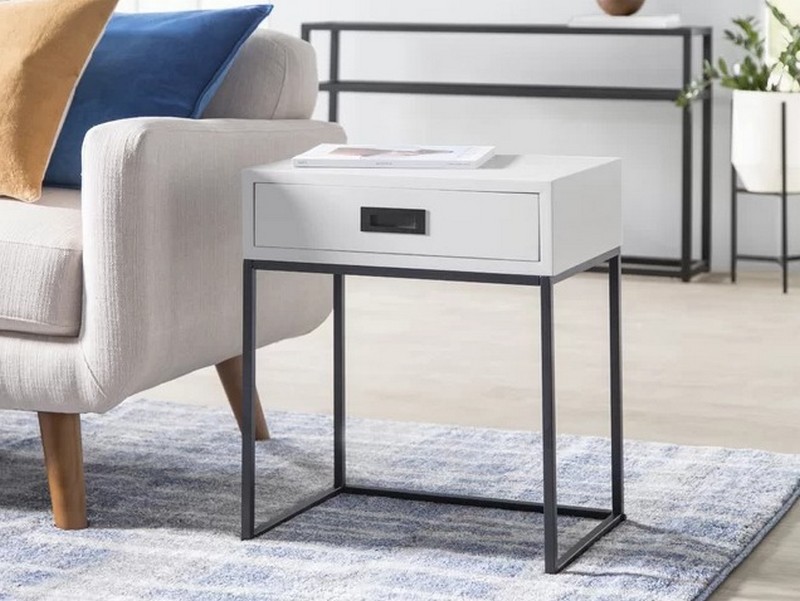
By material
When selecting a side table, various factors such as the material it is made from should be considered. While some individuals may prefer a side table that harmonizes with existing furniture, others may opt to create a contrast that adds visual interest.
Wooden side tables are a timeless choice that complements various interior design styles. The natural material adds warmth and character to a room, and offers a degree of sturdiness and durability, ensuring longevity. Wooden side tables are available in a variety of wood species and finishes, from classic oak to modern walnut.
For a more modern and minimalist look, a metal side table may be the preferred option. Metal tables can be made from various metals like steel or aluminum, and provide an elegant and sleek appearance. They are usually easier to clean and can even be used outdoors due to their weather-resistant properties.
Another material often used for side tables is glass. Glass side tables create an airy and transparent feel, imparting a sense of lightness to a room. They are well-suited to modern and contemporary interior styles and reflect light, making the room appear brighter and more spacious. However, it is important to clean glass side tables carefully to avoid fingerprints and smudges.
In addition to these common materials, there are also side tables made of marble, plastic, or even concrete. Each material has its own advantages and disadvantages, and it is worthwhile to carefully consider them before selecting a side table.
Overall, when selecting a side table, the material is crucial as it impacts both function and visual appeal. Regardless of whether you opt for wood, metal, glass, or another material, the side table should fulfill your requirements and reflect your personal style. With the right choice, a side table can help maximize space utilization and create a cohesive overall look.
Wooden side tables
An added benefit of wooden side tables is their robustness and durability. In comparison to furniture crafted from other materials, they often have a longer lifespan, allowing for years of use while maintaining their timeless attractiveness.
The undeniable natural beauty of wooden side tables lies in the distinct grain of each piece of wood, providing the table with its own unique character. Whether light, dark, or medium, there is a range of wood types available to suit your individual preferences and the desired ambiance in your room.
In addition to their aesthetics and longevity, wooden side tables are also highly practical, offering supplementary storage space for magazines, books, drinks, or decorative items. Some models even incorporate drawers or shelves for increased storage capacity.
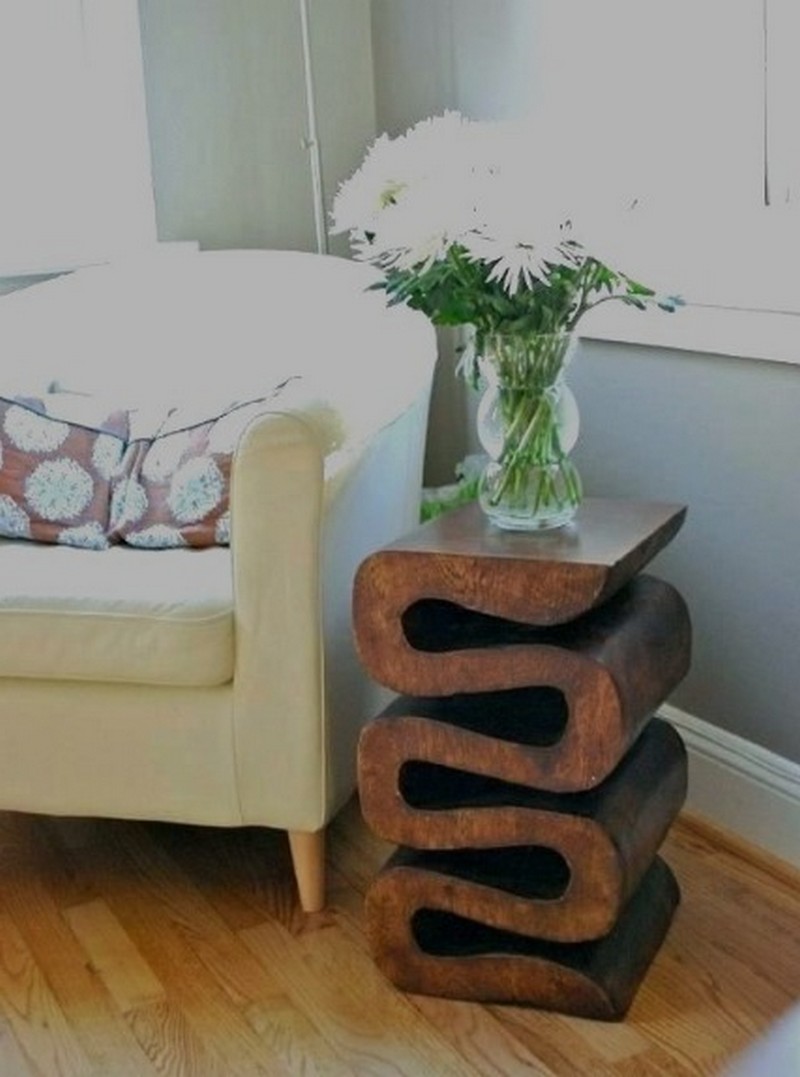
Maintaining wooden side tables is relatively simple. Regular wiping with a damp cloth and occasional application of wood care products are sufficient to preserve their beauty. Furthermore, any scratches or signs of wear can be easily sanded and refinished, restoring the table to its original condition.
Overall, wooden side tables make an appealing and functional addition to any home. Their natural beauty, versatility, and durability make them a worthwhile investment, seamlessly complementing both traditional and modern interior styles.
Metal side tables
Metal side tables are now a popular choice for contemporary and individualized furnishing solutions. This practical furniture piece combines functionality, aesthetics, and durability, making it an ideal addition to any home.
The side table serves as additional storage space and can be utilized in various settings, be it the living room, bedroom, office, or hallway, seamlessly fitting into any environment. Its compact dimensions make it ideal for smaller spaces or as a complement to existing furniture.
Metal side tables are characterized by their stability and longevity, thanks to the use of high-quality materials. Metal offers a wide array of design options, resulting in side tables available in a variety of styles, whether minimalist, industrial, or classic, catering to diverse preferences.
Another advantage of metal side tables is their ease of maintenance. Cleaning metal with a damp cloth is effortless, and metal is relatively resistant to scratches or stains, presenting itself as a practical choice for everyday use.
Metal side tables are also available in different sizes, allowing for customization to individual needs. Smaller models are perfect as side tables for individual chairs or as discreet storage in small alcoves, while larger models offer ample space for books, decorations, or even additional seating.
Glass side tables
Glass side tables are a sophisticated and practical addition to any living space, capable of serving various functions and adding a stylish accent. They are extremely versatile, seamlessly fitting into the living room, bedroom, or even the office.
One of the primary features of glass side tables is their transparency, creating a light and uncluttered feel. They seamlessly integrate into all interior designs, adding an elegant touch to any room and reflecting natural light, thereby creating a delightful ambiance.
Another advantage of glass side tables is their practicality, providing ample space for various items such as books, decorations, or drinks. Their compact size allows for easy placement next to a sofa, armchair, or bed, serving as practical storage. Additionally, they can function as stylish bedside tables, enhancing the bedroom decor.
Glass side tables are available in various shapes and sizes, catering to individual needs and preferences. From rectangular or square tables to round or oval models, a wide selection ensures diverse tastes are accommodated. Furthermore, table height can be adjusted to ensure optimal ergonomics.
When selecting a glass side table, it’s imperative to consider the quality of the glass. High-quality tempered glass is stronger and resistant to scratches and breakage. Moreover, the table should be stable and secure to prevent potential accidents.
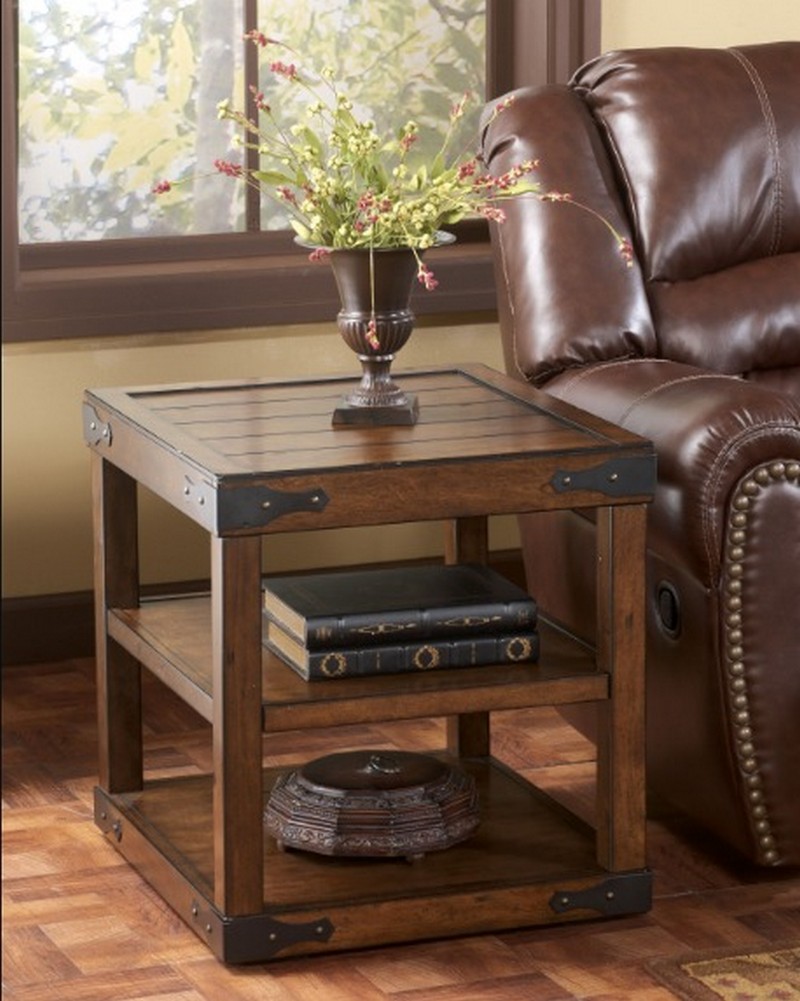
Side tables – An elegant fusion of design and style
Side tables are an exceptional way to enhance any room. They are not only functional furniture pieces but also captivating in terms of design and style. Whether in the living room, bedroom, or study, side tables offer diverse uses while meeting aesthetic demands.
Smaller and more compact than traditional coffee tables, side tables offer maximum flexibility due to their size, allowing them to be placed in various locations in the room. They can serve as a bookshelf, a decorative element, a bedside table, or a practical addition to the sofa, providing additional storage space and styling the room.
Side table designs are diverse, catering to different tastes. They range from minimalist, modern models with clean lines to rustic and antique versions made of solid wood, offering a variety of ways to complement the interior style. Additionally, materials such as glass, metal, or marble are frequently used to create a touch of luxury and elegance in side table designs.
Aside from their functional aspects, side tables can also function as statement pieces, adding flair to a room with their unique designs. Exclusive shapes, distinctive color combinations, and special details help these tables make a statement in a room, but it’s essential that they complement the room’s overall look and don’t appear excessive.
In addition to being functional and aesthetic, side tables are practical, with many models featuring additional shelves or drawers to keep small items like remote controls, magazines, or keys within easy reach. Their compact size allows for mobility, making it easy to move them to another location as needed.
With the wide variety of side tables available, it’s possible to find a design that perfectly suits personal preferences – from minimalist and modern tables with clean lines and smooth surfaces to rustic wooden tables with natural grains.
Modern side tables also offer practical advantages. They often include integrated storage features such as shelves, drawers, or racks, providing additional space for books, magazines, or home accessories. This allows for a neat and organized living room.
Another advantage of modern side tables is their mobility. They are often lightweight and compact, making them easy to move or relocate as needed, providing flexibility to adjust the room’s layout to individual needs.
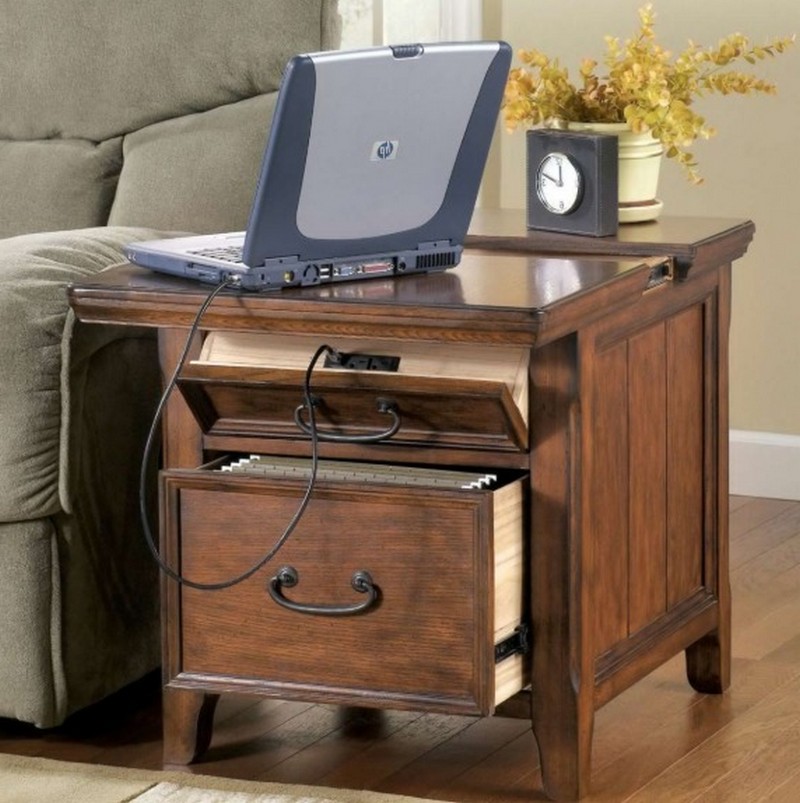
Tips for choosing the right side table:
When choosing a side table, it’s important to determine its intended purpose. Will it primarily function as a place to store drinks and snacks next to your sofa or as a bedside table? This can help determine the appropriate size and design for the table.
Size is a crucial factor when choosing a side table. Measuring the available space in the room where the table will be placed is important to ensure it fits the overall look. The height and width of the side table should also be considered to ensure comfort and functionality.
The design of the side table should complement the style of the room, whether it’s modern and minimalist or classic and rustic. With various designs available, the side table should match personal taste and the room’s style.
Material choice plays a significant role when selecting a side table. Wood, glass, metal, and plastic each have their own advantages and disadvantages, so it’s important to consider options carefully.
Lastly, considering the price is essential. Set a budget that aligns with your needs while keeping in mind the importance of quality and durability. A high-quality side table can provide years of enjoyment.
Paying attention to size and proportions:
Side tables play a significant role in interior design and can add style to a room. It’s important to pay attention to the size and proportions of a side table to ensure it looks its best.
Size is a critical factor to consider when choosing a side table. It’s important to avoid tables that are too large, as they can clutter a room, or too small, as they may not fulfill their function effectively. Considering the dimensions of the side table in relation to the room and other furniture is essential.
First, it is important to take into account the height of the side table. A table that is excessively low will appear out of proportion and absurd. Conversely, a table that is too high can be inconvenient and underutilized. It is recommended to adjust the side table’s height to match the surrounding furniture’s seat height in order to establish a cohesive overall appearance.
The width of the side table is a crucial consideration as well. A table that is overly wide can constrict the space and impede mobility. Conversely, a table that is too narrow may not fulfill its function and can seem insignificant. It is advisable to select the side table’s width in relation to the adjacent furniture, ensuring ample space for use and movement.
Additionally, the shape of the side table also plays an important role in its selection. Square or rectangular tables complement linear furniture styles, while round or oval tables match organic designs. The side table’s shape should harmonize with the room’s style, creating a balanced overall aesthetic.
Furthermore, the material of the side table should be carefully considered. Depending on the furniture’s style, various materials such as wood, glass, or metal can be chosen. The material should not only be visually appealing but also functional and easy to maintain.

Selecting the appropriate color and material:
When choosing a color for a side table, it is important to consider the existing colors in the room. If the living room is adorned in neutral colors such as white or cream, a side table in a bold color can create an intriguing contrast. If the room is already filled with color, it is advisable to opt for a side table in a similar or complementary color to establish a harmonious ambiance.
In addition to color, the material of the side table is also significant when making a choice. Various options are available, including wood, metal, glass, or plastic. Each material has its own advantages and should be chosen according to the room’s overall style and your individual needs.
For instance, if a rustic or natural look is preferred, a wooden side table would be a suitable choice. This material imparts a warm and inviting ambiance to the room. Conversely, for a modern and minimalist style, a side table made of metal or glass would be preferable. These materials exude elegance and create a sleek aesthetic.
Moreover, considering the side table’s practical aspects is important. Reflect on the table’s main purpose. Is it intended for holding drinks and snacks, or will it primarily serve as a space for books and magazines? Depending on its intended function, select an appropriate size and shape for the side table.
Lastly, don’t forget to incorporate your personal sense of style. Ensure that the side table is a reflection of your personality and individual taste. Are you drawn to a particular design or pattern? Don’t hesitate to make bold choices and infuse the room with your personal touch.
Side table care tips:
Side tables are a valuable addition to any home, offering both additional storage space and decorative appeal. To ensure that your side table remains in top condition, it is crucial to adhere to certain care tips.
Regular cleaning: Over time, dust and dirt can accumulate on the side table’s surface. To keep it clean, it is recommended to use a soft, lint-free cloth or a duster. Regularly clean the surface to remove dust and dirt.
Avoid excessive moisture: Since side tables are often crafted from wood or other delicate materials, it is important to prevent contact with liquids. Do not leave wet items on the table and promptly wipe away any spills with a dry cloth to prevent damage.
Use coasters: Side tables are often utilized to hold beverages or vases. To prevent scratches or water damage, always place coasters under glasses or cups. This safeguards the surface and prevents unsightly stains or damage.
Protect the surface: When placing decorative items such as vases or candles on the side table, consider using a protective surface such as felt or rubber. This will prevent scratches or stains from marring the surface.
Avoid direct sunlight: Side tables should be shielded from direct sunlight as prolonged exposure can cause discoloration or damage to the surface. Therefore, position the table in an area that is protected from direct sunlight.
Regularly care for the wooden surface: If your side table is constructed from wood, it is advisable to routinely treat the surface with wood polish or a specialized wood care product. This will keep the wood supple and shield it from drying out or developing cracks.
Remember to regularly check the stability of your side tables. It’s important to inspect the legs and joints to ensure they are secure and stable. If you notice any wobbling or unevenness, tighten the screws as needed or repair the table.
By following these tips for maintaining your side table, you can keep it in good condition and enjoy it for a long time. Consider the material and characteristics of your side table to select the appropriate care instructions. With proper care, your side table will remain a timeless and stylish addition to your home.

The versatility of side tables:
Side tables are often underappreciated, yet they provide both practical storage and a statement in the interior design. Their versatility makes them essential in any room.
Whether in the living room, bedroom, or hallway, side tables serve various purposes and can enhance the room in numerous ways. They offer an additional surface for placing items such as books, drinks, or decorations. Additionally, they can be used as a dressing table, bedside table, or work surface. Their compact size allows for easy movement to different locations in the room to meet individual needs.
However, side tables are not only practical but also serve as a design element. With their unique styles and materials such as wood, glass, or metal, they can enhance a room and create a cohesive atmosphere. They can act as a contrast to other furniture or become a focal point in a simple room. Their diverse shapes and colors allow for creative design opportunities.
Furthermore, side tables offer flexibility. Their small size makes them suitable for small rooms while still providing ample space. They are easy to relocate to different areas in the room as needed, making them ideal for adjusting the interior design or accommodating various purposes.
Overall, side tables are incredibly versatile pieces of furniture. Whether as a practical storage surface, a decorative element, or a flexible addition, they fulfill multiple functions and can be tailored to individual needs. Their versatility makes them an indispensable piece of furniture that is essential in any room. Explore the potential of side tables and let your imagination soar to enhance your interior.
